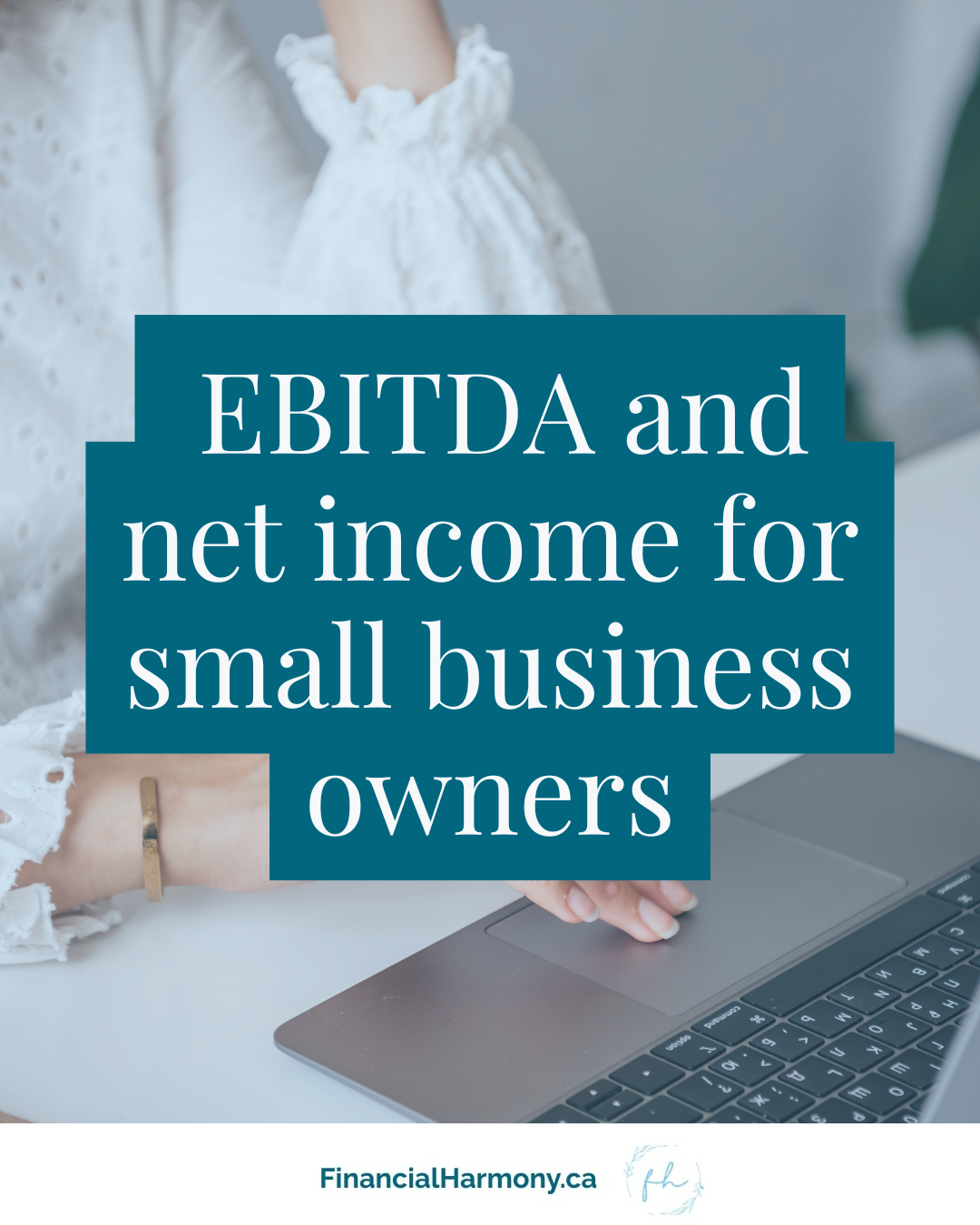
EBITDA vs. Net Income: What Small Business Owners Need to Know
When you’re running a business, keeping an eye on your bottom line is important—but which “bottom line” are we talking about? Two of the most commonly misunderstood financial terms are EBITDA and Net Income. While they’re both indicators of profitability, they tell very different stories.
Let’s break it down in plain English.
What Is Net Income? (AKA “The Real Bottom Line”)
Net income is what’s left after you subtract all of your expenses—including operating costs, taxes, loan interest, and depreciation—from your revenue. It’s the final number on your income statement and the one the CRA cares about when it comes to taxes.
💡 Think of it like your personal paycheck after all your bills have been paid.
What Is EBITDA? (Earnings Before Interest, Taxes, Depreciation, and Amortization)
EBITDA is a way to measure your business’s core operating performance without the “noise” of financing choices, tax strategy, or accounting methods.
Here’s the breakdown:
Earnings
Before
Interest
Taxes
Depreciation
Amortization
💡 Think of it like your paycheck before you paid your mortgage, taxes, and wrote off your car.
Why Should Small Business Owners Care?
✅ Use Net Income for taxes and investor reporting
This is the true profit of your business after everything’s said and done.
✅ Use EBITDA to understand operational performance
It helps you (and potential lenders or buyers) see how profitable your business really is without being skewed by debt or large asset purchases.
An Example: Meet Jamie
Jamie runs a small graphic design business and made $100,000 last year.
- Interest on a business loan: $5,000
- Taxes: $10,000
- Depreciation on computer equipment: $3,000
- Amortization of a website build: $2,000
Net Income = $80,000
EBITDA = $100,000
So while Jamie’s net income shows $80K in true profit, her EBITDA tells a story about a business generating $100K in earnings from day-to-day operations.
Which One Should You Track?
Both. But for different purposes:
- Track Net Income to stay compliant and make tax-smart decisions.
- Track EBITDA when applying for financing, selling your business, or evaluating how efficiently your business is running.
Final Thoughts
At Financial Harmony, I help small business owners make sense of these numbers. Whether you’re cleaning up your books or planning for growth, understanding the difference between EBITDA and net income helps you make better, more confident decisions.
📅 Book a free consultation
📧 april@financialharmony.ca
🌐 www.financialharmony.ca